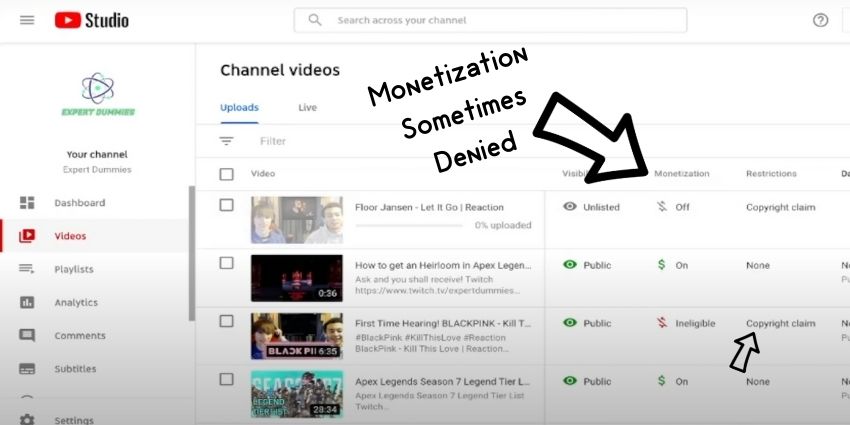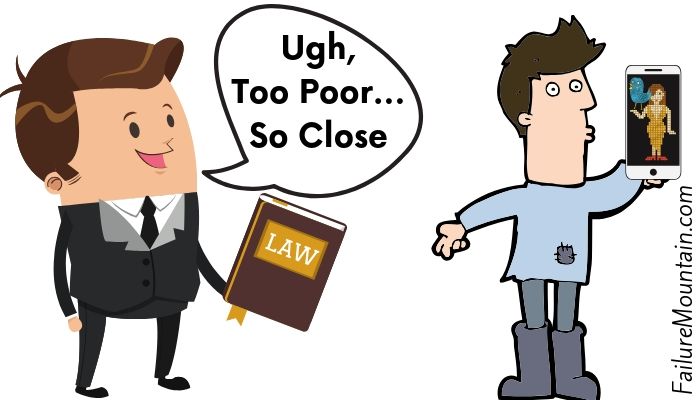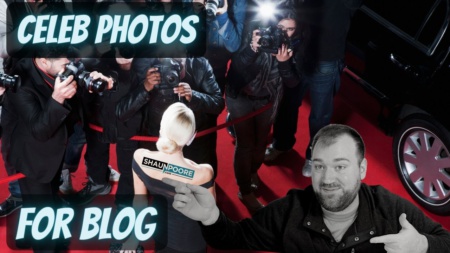This article is a follow-up to my post on using celebrity photos on your blog (for free). In that post, I recommend embedding the images on your blog from Getty Images, Twitter, Instagram, Giphy, etc. But unfortunately, embedding isn’t an option on YouTube.
So what can you do?
Use a Stock Photo/Video Site (Use Shutterstock)
Shutterstock has the clearest license, best selection, best prices, and easiest UI for celebrity footage (or photos). If you’re going to use a stock site for celebrity video, it’s by far the best option.
However, I go over a few other options in my post about getting news clips for your YouTube videos.
Can You Simply Use Media and Claim Fair Use?
First, I am not a lawyer, and none of this is legal advice (just my personal experience). I highly recommend watching Tom Scotts’ amazing video about fair use to become more acquainted with how fair use works on YouTube.
When you use copyrighted material, YouTube’s Content ID system is pretty great at automatically recognizing it, putting in a copyright claim, and demonetizing your videos (like below).

Reaction channels are the best example I have of creators attempting to get away with blatant copyright violations by claiming fair use. Fair use is a US law that allows for some exceptions when using other people’s content for purposes such as criticism, news reporting, teaching, and research.
We’ll dive more into fair use later in this post. For now, you need to understand the following.
- Playing an entire episode of Rick and Morty and videotaping yourself laughing isn’t fair use. At a minimum, you need to be providing serious commentary on all of the copyrighted material you’re using in your video.
- The video’s focus needs to be on you and your commentary, not the copyrighted material.
- You should always be on the screen.
- The copyrighted material shouldn’t be full screen or played in its entirety.
Doing all this doesn’t guarantee that YouTube will accept your video as fair use (and thus allow monetization). That said, if you do all these things, it puts you on better footing when disputing the inevitable copyright claims. See the video below for how to dispute a claim.
Something vital to keep in mind is that if your appeal is denied, you should NEVER appeal a 2nd time. There are numerous reports of people pushing the system and getting copyright strikes on their videos. And it only takes three strikes before your channel is deleted.
Fair Use: Using Copyrighted Material is Risky Business
Oftentimes, copyright claims are relatively harmless on YouTube. The copyright owner will simply collect all of your video’s YouTube Adsense revenue in most instances. And both of you will move on with your lives.
The reason for this lack of enforcement isn’t because they couldn’t sue you or petition YouTube to issue a copyright strike (they very much could). It’s more lucrative for the company to simply collect all of your Adsense revenue than to file a lawsuit. Suing poor teenagers living in their Mom’s basement is unlikely to net these companies a ton of money.

If you’re a larger channel or business, there may be more reasons for the copyright holder to not be satisfied with just getting your YouTube Adsense revenue. Or, certain companies go around and issue complaints with YouTube on any channel using any of their clips. And it only takes three strikes for your channel to get shut down and have it be gone forever!
I recommend using stock video sites for YouTube and stock music sites for YouTube. And if you do need a celebrity photo or video on the platform, I recommend you license it through Shutterstock.
While you may be able to get away with using a fair use argument if you do it tastefully enough. I would rather sleep easy at night not having to worry about it. Potential copyright strikes and lawsuits are serious business.


